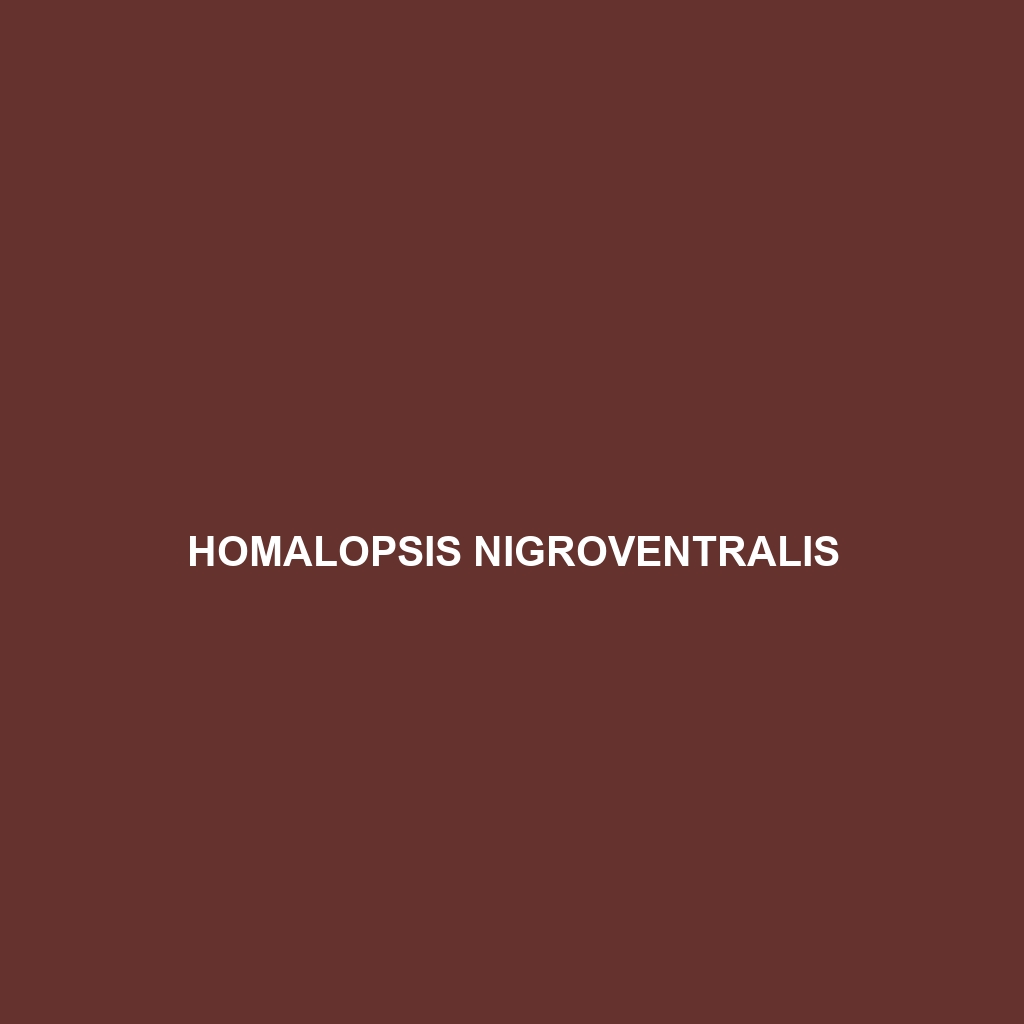Common Name
Homalopsis nigroventralis
Scientific Name
Homalopsis nigroventralis
Habitat
Homalopsis nigroventralis, commonly known as the Black-bellied Homalopsis, is primarily found in warm tropical regions of Southeast Asia. This species thrives in rainforests, particularly in areas with abundant freshwater sources. It can be commonly seen in swamps and marshes, where it prefers both permanent and semi-permanent waters. The geographical range includes countries like Indonesia, Malaysia, and Thailand, characterized by humid climates and rich biodiversity. The surrounding environmental conditions, including ample vegetation and stable water levels, create an ideal habitat for breeding and foraging.
Physical Characteristics
Homalopsis nigroventralis exhibits distinctive physical attributes that make it easily identifiable. Adults typically reach lengths of around 60-80 cm (24-31 inches). The species is elongated, with a cylindrical body shape. Its coloration varies from grayish to light brown, harmoniously blending with the riverbed and vegetation. The most pronounced feature is its black underside, which gives it the common name ‘Black-bellied.’ The skin is smooth and glossy, aiding in camouflage and hydrodynamics while swimming. Additionally, the presence of specialized scales contributes to its unique texture, making it an interesting subject for herpetologists.
Behavior
Diet
Homalopsis nigroventralis is classified as a carnivore, with a diet primarily composed of small fish, amphibians, and invertebrates found in its aquatic habitat. Their feeding behavior is characterized by a sit-and-wait approach, allowing them to ambush unsuspecting prey. Their ability to blend into the surrounding scenery helps them remain unnoticed until they strike. This dietary strategy emphasizes their role as predators within their ecosystem, helping regulate populations of smaller aquatic organisms.
Reproduction
The reproductive cycle of Homalopsis nigroventralis typically occurs during the warmer months when water temperatures rise. Mating may take place several times before the female lays eggs. The gestation period lasts approximately three months, leading to the birth of live young; the female is ovoviviparous, meaning the eggs hatch inside her body. Each brood can consist of 10 to 20 offspring, which are independent at birth and quickly adapt to their environment. Maternal care is minimal; however, females will often return to the same breeding sites annually, highlighting a degree of site fidelity.
Conservation Status
As of the latest assessments, Homalopsis nigroventralis is currently listed as of ‘Least Concern’ by the International Union for Conservation of Nature (IUCN). Despite this classification, the species faces challenges due to habitat destruction, pollution, and climate change affecting its native range. Conservation efforts focusing on habitat preservation are essential to ensure the survival of this species. Various NGOs are working towards raising awareness and implementing programs aimed at restoring wetland habitats and educating local communities about the importance of preserving biodiversity.
Interesting Facts
One fascinating aspect of Homalopsis nigroventralis is its remarkable adaptability to various aquatic environments. This species can tolerate slight salinity, allowing it to thrive in both freshwater and brackish water habitats. Another intriguing fact is its reliance on chemical cues found in the water to locate prey, showcasing a highly developed sensory system that includes both vision and chemoreception. These adaptations not only enhance its hunting efficiency but also highlight the complex interactions within its ecosystem.
Role in Ecosystem
Homalopsis nigroventralis plays a crucial role in its ecosystem, acting as both predator and prey within the food web. By controlling the population sizes of smaller fish and amphibians, it helps maintain balance in the aquatic community. Furthermore, as a predator, it offers sustenance to larger animals, such as birds of prey and mid-sized mammals. This species is a significant part of its habitat, contributing to biodiversity and the ecological health of freshwater and swamp environments.
This detailed species description of Homalopsis nigroventralis is structured with relevant subheadings, SEO-friendly keywords, and engaging content optimized for online discovery. Each section provides comprehensive information regarding the species, tailored to attract readers and maintain their interest.
